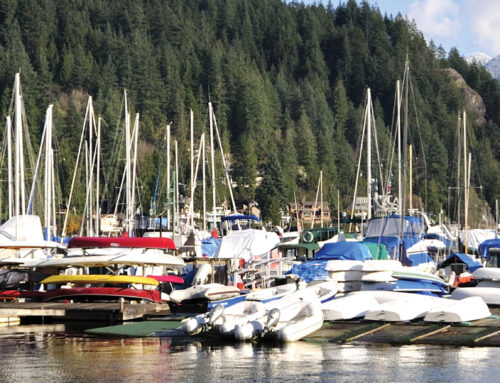Understanding insurance
The facts on the New Longshore Recreational Vessel Regulation.
By Maura Keller
Gather together manufacturers and fabricators within the marine industry and it won’t take long for them to determine they share a common malady: the changing structure of insurance.
In 2009, the Longshore and Harbor Workers’ Compensation Act (LHWCA) was amended by the American Recovery and Reinvestment Act of 2009. These amendments excluded certain additional recreational-vessel workers from the LHWCA’s definition of “employee” as it relates to the repair and dismantling for repair of recreational vessels.
As Cindy Squires, chief counsel for public affairs and director of regulatory affairs at the National Marine Manufacturers Association (NMMA) explains, in response to this new law, the Department of Labor revised its regulations, which became effective Jan. 30, 2012. “These regulations and additional guidance provided in the Federal Register are of interest to any employer or insurer of an employer who employs workers who build, repair or dismantle recreational vessels,” Squires says.
Businesses with employees that repair recreational boats on the water were the beneficiaries of the 2009 amendments to the Longshore Harbor Workers’ Compensation Act. “Prior to the amendments, the recreational exemption to Longshore insurance coverage applied only to employees working on boats under 65 feet in length,” Squires says. “Under the new amendments, the exemption now applies regardless of the length of boat repaired. Congress did not change the exemption for the manufacture of recreational vessels. However, when the Department of Labor issued new regulations to implement the law, it added new language clarifying when boat manufacturers’ operations are covered under LHWCA.”
According to Squires, the point of these regulations is to tell an employer when it must ensure its employees are covered by federal Longshore insurance and when the employer can rely on state workman’s compensation coverage. “In some cases, due to the nature of the work performed by its employees, an employer may opt for a policy that provides both types of coverage,” Squires says. “Many employers, depending on the cost of state workman’s compensation insurance, may seek to reduce the number of employees covered under Longshore insurance due to its higher cost.”
Mark Yearn, owner of Norman-Spencer Marine, stresses that the Longshore Act applies to all businesses located on the navigable waterways of the United States. “This is defined as not only coastal areas, but includes all the tributaries that feed into the body of water that is considered a navigable waterway,” Yearn says. “The Mississippi River for example is a navigable waterway as it ends in the Gulf of Mexico. Because you can navigate the Mississippi from Minnesota to the Gulf, the entire Waterway is considered a Longshore Facility.”
The impact on workplace insurance
Yearn says that the key new rules that may impact marine fabricators will result from the type of work they perform. “If their work is considered repair to private pleasure boats only, then Longshore will not be an issue, regardless of where they are located,” Yearn says. “If, however, the work is performed on commercial watercraft, the Longshore Act may impact their business and could result in the entire operation being classified as a Longshore Facility.”
As it pertains to workplace insurance, the Longshore rules determine when LHWCA coverage is triggered. “Marine employers should be generally familiar with the rules for Longshore insurance and work with their insurer to make sure that they have the coverage that makes sense for their operations,” Squires says. “We recommend that our members work with an insurer that has taken the time to become knowledgeable about the new rules and review their coverage needs in light of these recent changes. In some cases, the changes could result in reduced premiums, so it is a conversation worth having.”
So how do you determine if you need Longshore insurance coverage?
First, a marine employer should determine what kind of vessels its employees are working on. Are the vessels recreational (over or under 65 feet), commercial, carrying passengers for hire, or police boats? Second, the employer should determine where its employees work on these vessels. Are the employees working in a facility on the water, or adjoining the water? “Finally, a marine employer should determine if all of its employees follow this pattern or if it has some that never work on vessels or only work on vessels of a certain type,” Squire says. “Once it has this information, a marine employer needs to talk to its insurer to determine if it needs LHWCA coverage.”
Fabricators also need to pay attention to these regulations and modify their insurance needs accordingly. “Take the time to be familiar with the Longshore rules and your current employment insurance coverage,” Squires says. “You want to make sure you aren’t paying for insurance coverage you don’t need, but also make sure you are being prudent and have a Longshore rider in case your operations change or you face a Longshore claim. If you know what activities may trigger Longshore coverage for your business, you can make an informed business decision.”
Concerns and drawbacks
The biggest concern Yearn has with the Longshore Act is the last sentence of the Act itself, which states, “as long as State work comp benefits apply.”
“By adding this line to the Act, all the other facilities, rules, definitions and segments of the industry that are excluded from the Act can now fall under the Act should State Work Comp benefits not apply,” Yearn says.
So how would this affect fabricators? As Yearn explains, if a business employs, hires, or contracts an individual who specializes in some sort of work who does not have state work comp insurance, whether they can purchase it or not, then they can file a claim against the business that employed them, even though they may have been hired on an independent contractor basis, under the Longshore provision.
“The state act requirement of the Longshore was designed to not extend Longshore benefits to those workers who were excluded under the act that were covered by the state work comp, but protect those workers who may be working on the navigable waters of the U.S. and who may not be able to purchase state work comp,” Yearn says. “Any business that is located on the navigable waters of the U.S. that employs individuals and/or businesses who do not have state work comp insurance could potentially subject themselves to the filing of a claim under the Longshore Act.”
Yearn adds that any business located on the navigable waters of the U.S. should do one of two things: one, never hire an individual or business without evidence of state work comp insurance, or, two, make sure that their own work comp policy provides them with coverage for the U.S. Longshore Act.
“Finally, if you are a boat builder, then an entirely different section of the act would apply,” Yearn says. “But again, if the construction is for private pleasure use only, then they would fall outside of the Act’s protection. If they do work on commercial vessels, they may be opening themselves up for an entirely different set of regulations and rules, depending on whose boats they are working on.”
Yearn advises businesses located on the navigable waters of the U.S. to make sure that they have Longshore coverage on their work comp policy. “I have been specializing in the marine insurance world since 1982 and have yet to have a claim made, filed or paid under the Longshore Act,” he says. “That’s not to say the exposure doesn’t exist. Basically, if you include coverage under your work comp policy for the Longshore Act on an ‘if any or minimum premium’ basis, then you will at least have the defense coverage required to defend them in any potential claim. If you do this at the very least, then you will know that they are protected.”
 TEXTILES.ORG
TEXTILES.ORG 






